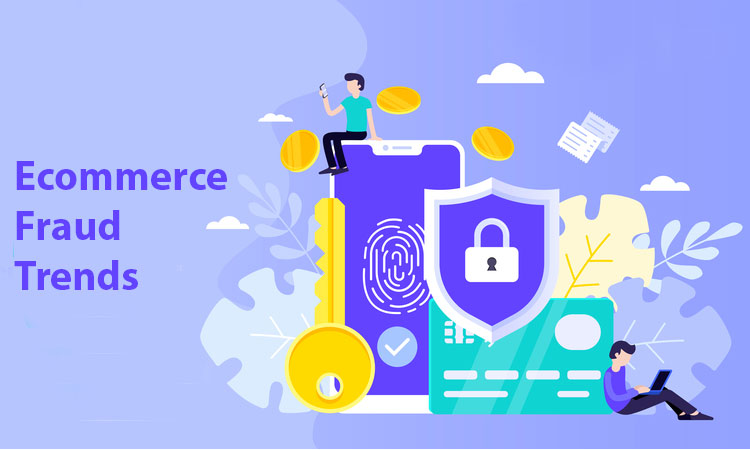As the ecommerce industry grows, fraudsters have been working hard to think of new ways of stealing money or user credentials online.
Online fraud methods are often ahead of security systems and merchants need to be informed about fraud trends on time to implement fraud prevention best practices. If you nip fraud attempts in the bud, you’ll reduce the risk of losing money and time on additional protective activities.
In this article, we discuss the latest ecommerce fraud trends and tips for overcoming them.
1. Buy Online, Pick Up in Store Chargebacks (BOPIS)

Global ecommerce sales have grown from $1.34 trillion in 2013 to $4.28 trillion in 2020. This shift has made many traditional merchants jump on the ecommerce bandwagon. Traditional brick-and-mortar stores started offering new digital services, such as buy online, pick up in store (BOPUS) options. Customers select and order their goods online and pick them up in-store.
While this is a buyer-friendly feature, BOPIS-based fraud rose by 55% between 2019 and 2020.
In such transactions, fraudsters steal cardholders’ data and use them to buy products online, only to request a chargeback. Cardholders notice the fraud only when they get the chargeback notification or when the refund is made to their account. Before they realize what's happened, fraudsters transfer money from the cardholders’ accounts to their accounts.
Prevent this fraud by keeping a detailed record of all payments and chargebacks. Deal with customer complaints timely and handle payment processing with proper care.
2. Unauthorized Use of Unused Accounts

Due to the COVID-19 pandemic, many merchants had to develop various incentives to boost sales. They launched promotional campaigns and special discounts for old, inactive customers and new buyers alike.
While such measures usually increase revenue, they’re fertile ground for fraudsters aiming at taking over customers’ accounts to steal personal data or assets. They typically take over the returning customers’ accounts. Both merchants and customers suffer damage from such attacks.
Ensure additional tracking of accounts that have been idle for months or longer. React at once if you notice a sudden intensive shopping activity from idle accounts.
Ask the returning customers to update their personal information and request two-factor authentication. It will likely convert returning customers into recurring customers and repel potential fraudsters.
Note: Learn more about payment frauds and how to prevent them.
3. Synthetic Identity Theft

In synthetic identity theft, cybercriminals combine real and fake data to build completely new identities.
This technology relies on artificial intelligence to take facial elements from several people and create new personas. Merchants using facial recognition for identity verification may experience significant losses if they’re scammed by these artificially created buyers.
It’s one of the most dangerous scams threatening ecommerce. Use top-notch identification software to identify synthetic identities.
4. Product Not Received Fraud
Sometimes customers claim that they haven’t received a product they ordered or got a different item. They don’t want to go through the item-returning procedure and decide to take a shortcut.
However, when fraudsters opt for such a scheme, it can cost merchants a lot of money. For instance, a customer may report that they didn’t receive a larger number of products and ask for a refund. The merchant pays the requested amount, whereas the fraudster sells the products and makes a profit.
Include additional questions in the refund procedure for non-received items and specify a stricter compensation policy. Apply analytical tools that recognize abuse patterns and prevent further damage.
5. Upgraded Account Takeover Actions (ATO)
In a traditional account takeover action, the fraudster steals the customer’s account credentials and uses their assets to pay for goods or services. This fraud technique now takes one step further so that fraudsters sell user account information to third parties.
For instance, a fraudster with stolen user’s payment data orders an item and has it shipped to the user’s address. They cancel the order before it’s shipped and require the return of the funds in the form of credit for new purchases. Now they have all the credentials and full access to the user’s account along with some assets on the account. The more credit there is on the account, the higher its cost is on the black market.
As predicted by Experian, cybercriminals will go the extra mile using stolen information from one breach to get control over other accounts owned by the victim (credential stuffing). They’ll apply fraudulent data to automatically create accounts (script creation), too.
To prevent account takeovers, ensure more robust protection at the login stage. Preventing potential perpetrators from taking over user accounts is much easier than catching them at the checkout.
Note: Learn more about the upcoming payment trends to stay up-to-date.
6. Voice Deepfakes

It is estimated that voice commerce will rise to $80 billion in 2023. Retail leaders are taking note and are adapting their omnichannel experience to provide shopping via voice assistants.
However, the technology is still not perfect and digital criminals can commit deepfake audio fraud by imitating users’ voices. Consequently, hackers might dodge identity verification systems and buy items pretending to be someone else.
Don’t avoid integrating voice shopping as part of your online shopping experience. Your competitors certainly won’t. However, pay close attention to security when it comes to voice assistant orders. Use fraud prevention systems that can discover synthetic voice during identification.
Note: Learn everything you need to know about the rising trend of Voice Commerce.
7. Pharming Fraud
Pharming is an ecommerce fraud trend in which hackers build fake copies of ecommerce websites and redirect users to them. Customers aren’t often aware that they’re leaving their payment data on another website instead of the one they’re visiting.
Work with website developers to additionally protect landing pages and improve antimalware protection, as well.
Conclusion
Since ecommerce is one of the fastest growing industries globally, it’s highly exposed to different security threats and financial challenges.
The fraud trends and tips described above help merchants operating in this niche understand the current issues and find solutions for overcoming them.
